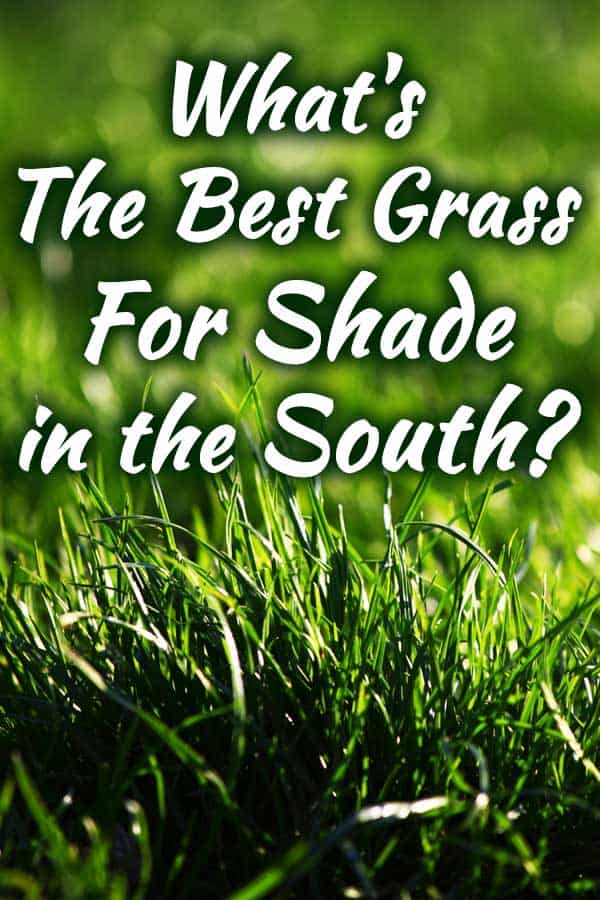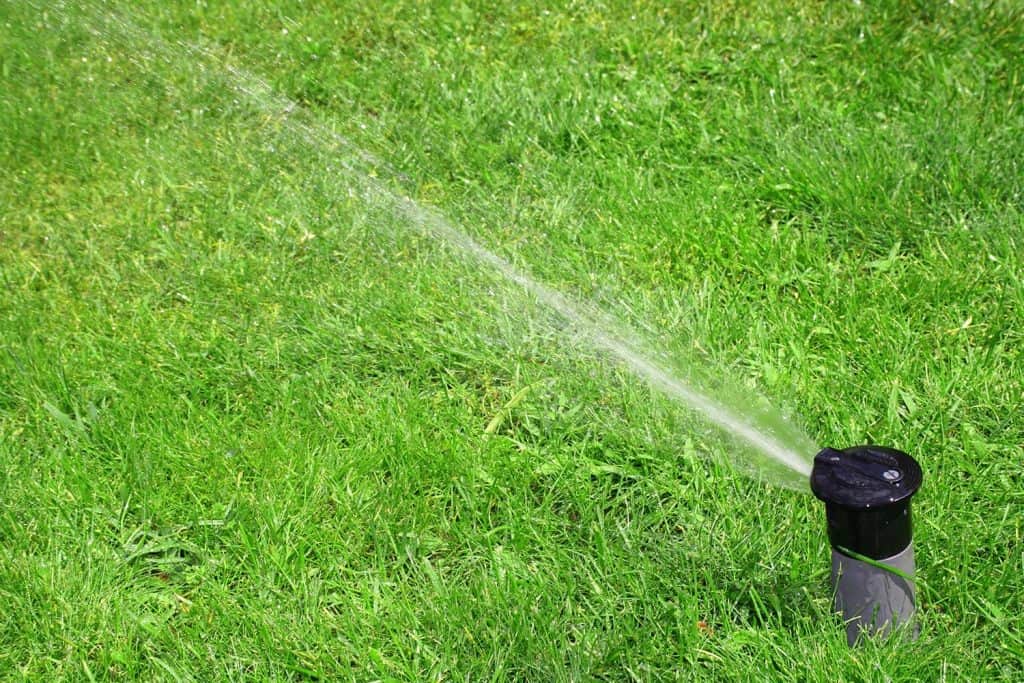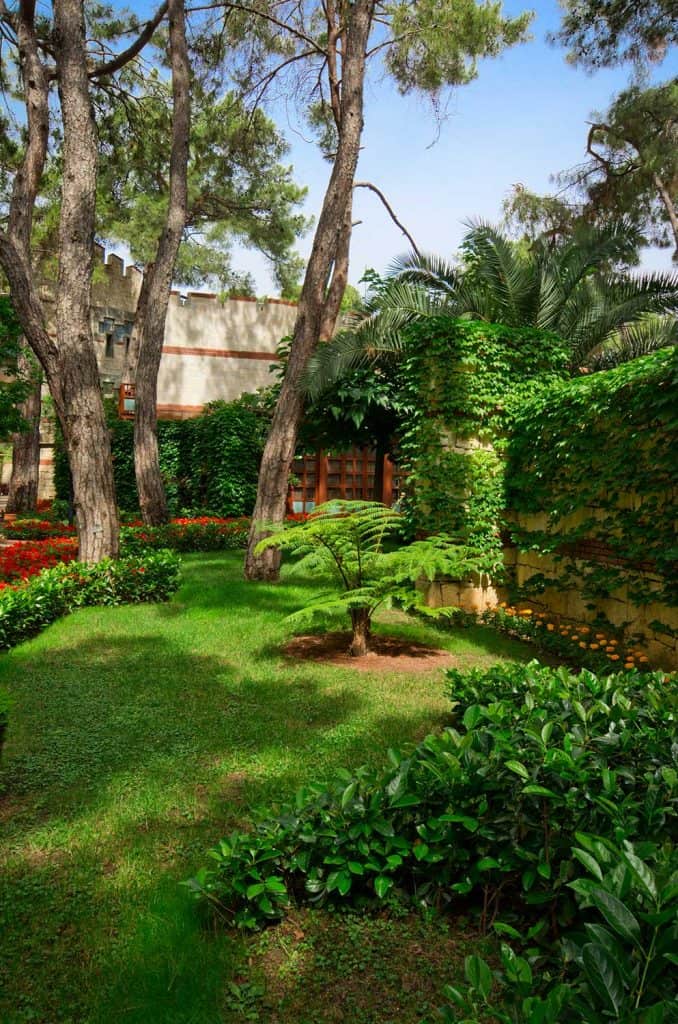 When you’re trying to find the right grass for a southern lawn, there are a lot of factors to think about besides looks. Soil quality, climate, light, rainfall, and the surrounding landscape all play a part. Shady areas, in particular, can be troublesome to fill, so we compiled a guide based on the latest expertise to find just the right grass for you.
When you’re trying to find the right grass for a southern lawn, there are a lot of factors to think about besides looks. Soil quality, climate, light, rainfall, and the surrounding landscape all play a part. Shady areas, in particular, can be troublesome to fill, so we compiled a guide based on the latest expertise to find just the right grass for you.
The best grass for shade in the south depends on how far south you are. In warmer states, like Florida and Louisiana, the best grass for shade is St. Augustine grass, especially the Seville and Delmar cultivars. Further north, in Tennessee and Virginia for instance, Fine Fescue grass is the best grass for shaded lawns and landscapes. Zoysia grass is another good grass for the shade and can grow throughout the south, but it does best with a bit more sunlight, typically 8 hours.
No matter how shade-tolerant your grass is, it won’t do well in the shade unless it’s properly maintained. There are also many nuances between these varieties that bear consideration when selecting the best grass for your specific lawn conditions. Let’s take a deeper look at these varieties and the best ways to maintain them.
Considerations When Choosing a Grass for Shade in the South
There are several things that you need to think about before you choose a type of grass for your Southern shady spot. From the overall appearance to the amount of maintenance each type requires, understanding these will help you choose the right grass for your needs.
Appearance
As the name implies, Fine Fescue grass has a very fine, thin blade. Zoysia grass also has thin blades, but St. Augustine grass has much wider blades. Zoysia can have a greyish-green appearance. St. Augustine grass has a bright green hue, and Fine Fescue grass has a deep green color. All three grow thickly and will give your lawn a full, healthy appearance.
Water Requirements

St. Augustine grass can be pretty susceptible to drought if overwatered. It needs deep roots to tap into the water below the ground level, but overwatering damages these roots, making it much less tolerant of drought.
Fine Fescue grass requires drier soil with good drainage. Zoysia grass is rather sensitive to changes in watering and rainfall. It can be quick to turn brown and equally quick to turn green again once sufficiently watered.
Climate Tolerance
St. Augustine grass and Zoysia grass are both warm-season turfgrasses. This is why both tend to thrive in the warmest parts of the south and why St. Augustine grass doesn’t grow well in the upper south, where temperatures can dip far below freezing. Fine Fescue grass is a cold-season turfgrass and only grows well in the upper south. If it gets too warm during the summers, Fine Fescue grass will brown until temperatures cool back off in the fall. Conversely, Zoysia grass and St. Augustine grass will often brown and go dormant during the winter.
Moderate Shade
If you’re looking for grass to fill-in an area that only gets a moderate amount of shade, you can safely use a less shade-tolerant variety of grass than those previously mentioned. For instance, Centipedegrass grows throughout much of the south and can be a good option for lawns with intermittent shade. In the upper south, Tall Fescue grass can also be grown in moderately shady areas.
Maintenance
Nitrogen is one of the most important fertilizer components for turfgrasses, but you don’t want to add any extra for grass in the shade. Adding too much nitrogen will encourage upward growth and discourage root growth, making the plants weak and spindly. Try not to fertilize any more than you would for sunny areas of your lawn, and try using a slow-release fertilizer with equal amounts of nitrogen and potassium.
You’ll want to adjust your mowing habits as well. Raising the height on your mower gives the grass more leaf surface area to capture the limited sunlight in shady areas. Walking on shady areas as little as possible will also help reduce trauma to your grass.
Shaded areas tend to retain water better than areas in full sun, so you’ll want to reduce irrigation for your grass in the shade. This will help prevent the problems mentioned earlier with overwatering St. Augustine grass and keep any shade-tolerant grass green and healthy.
How to Grow Grass in Shade in the South
Like all other plants, grasses use sunlight to make fuel and other essential compounds through photosynthesis. When warm-season turfgrasses like St. Augustine grass and Zoysia grass don’t get enough sunlight, they tend to be spindly, with stunted lateral stem growth and development. Cold-season turfgrasses tend to become more susceptible to disease when there’s not enough sunlight. If the area you’re looking to plant in doesn’t provide enough sunlight for even these shade-tolerant grass varieties, you may want to look into alternative ground covers like ivy or mulch.
Once you’ve identified what kind of grass you want to grow, you’ll want to evaluate your soil and make sure it has the proper acidity and nutrients for the specific kind of grass you want to grow. After the grass is planted, follow the maintenance instructions for shaded grass above to ensure a full, healthy lawn.
What Kind of Grass Should You Grow Under Shade Trees?
 Any shade-tolerant grass can grow under shade trees, but it will be more difficult for grass to grow there due to competition with the tree’s roots for nutrients. You can help your grass grow better under shade trees by trimming back the trees to allow more sunlight through and by adjusting your fertilizing and irrigation to compensate for both the lawn and the trees’ needs.
Any shade-tolerant grass can grow under shade trees, but it will be more difficult for grass to grow there due to competition with the tree’s roots for nutrients. You can help your grass grow better under shade trees by trimming back the trees to allow more sunlight through and by adjusting your fertilizing and irrigation to compensate for both the lawn and the trees’ needs.
Best Grass Seed for Shade and Poor Soil
Fine Fescue grass and Tall Fescue grass are well-adapted to both shade and poor soil, but they don’t grow well south of Tennessee and the Carolinas. For the warmer parts of the south, Centipedegrass is a very low-maintenance option that is well-adapted to nutrient poor soil. It even bears the nickname of “Lazy Man’s Grass.”
A Healthy Southern Lawn
Now you know what kind of grass to grow in the shade and how to maintain it! Once you’ve planted your grass, you’ll be able to enjoy a lush, green lawn, even in the shadiest areas of your yard.
Suggested Reading
Looking to set up a garden and/or lawn in the southern regions of the US? You might find these posts interesting too -
9 Types of Sod Grass That May Be A Good Fit For Your Lawn
How to Grow Pumpkins in Florida
How to Grow Pumpkins in Texas?
20 Shrubs That Like Wet Soil and Full Sun

Wow, I never knew before that there are such things as shade-tolerant grass. I’ve always wondered why the grass on my lawn doesn’t grow evenly and now I think it’s because of the shade of my tree. Perhaps I should buy a different type of grass to make my lawn look more uniform.